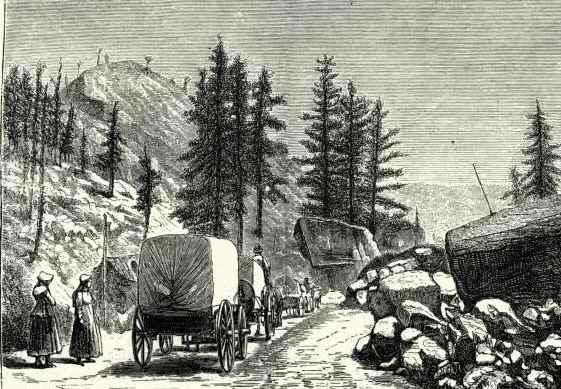






See listing of Recent and Most Popular articles on the Home Page
Health & Wellness
Category: News & Current Events / Topics: COVID-19 • Crisis • Current Events, News • News • Social Issues • Wellness
They Waited, They Worried, They Stalled. This Week, They Got the Shot.
by Julie Bosman / New York Times
Posted: July 30, 2021
The U.S. vaccine rollout has plateaued and the course of the coronavirus pandemic in this country may depend on how many people are ultimately swayed to get vaccinated…
Following is an excerpt of a much longer article by Julie Bosman that appeared in the New York Times this past week. A link to the full article will be found at the bottom of the page.
CHICAGO — They acknowledged that they could have shown up months ago. Many were satisfied that they were finally doing the right thing. A few grumbled that they had little choice.
On a single day this past week, more than half a million people across the United States trickled into high school gymnasiums, pharmacies and buses converted into mobile clinics. Then they pushed up their sleeves and got their coronavirus vaccines.
These are the Americans who are being vaccinated at this moment in the pandemic: the reluctant, the anxious, the procrastinating.
In dozens of interviews on Thursday in eight states, at vaccination clinics, drugstores and pop-up mobile sites, Americans who had finally arrived for their shots offered a snapshot of a nation at a crossroads — confronting a new surge of the virus but only slowly embracing the vaccines that could stop it.
The people being vaccinated now are not members of the eager crowds who rushed to early appointments. But they are not in the group firmly opposed to vaccinations, either.
Instead, they occupy a middle ground: For months, they have been unwilling to receive a coronavirus vaccine, until something or someone — a persistent family member, a work requirement, a growing sense that the shot was safe — convinced them otherwise.
How many people ultimately join this group, and how quickly, could determine the course of the coronavirus in the United States.
Some of the newly vaccinated said they made the decision abruptly, even casually, after months of inaction. One woman in Portland, Ore., was waiting for an incentive before she got her shot, and when she heard that a pop-up clinic at a farmers’ market was distributing $150 gift cards, she decided it was time. A 60-year-old man in Los Angeles spontaneously stopped in for a vaccine because he noticed that for once, there was no line at a clinic. A construction worker said his job schedule had made it difficult to get the shot.
. . . .
The campaign to broadly vaccinate Americans against the coronavirus began in a roaring, highly energetic push early this year, when millions were inoculated each day and coveted vaccine appointments were celebrated with joyful selfies on social media. The effort peaked on April 13, when an average of 3.38 million doses were being administered in the United States. The Biden administration set a goal to have 70 percent of American adults at least partly vaccinated by July 4.
But since mid-April, vaccinations have steadily decreased, and in recent weeks, plateaued. Weeks after the July 4 benchmark has passed, the effort has now dwindled, distributing about 537,000 doses each day on average — about an 84 percent decrease from the peak.
About 68.7 percent of American adults have received at least one shot. Conservative commentators and politicians have questioned the safety of the three vaccines that the Food and Drug Administration has approved for emergency use, and in some parts of the country, opposition to inoculation is tied to politics. An analysis by The New York Times of vaccine records and voter records. in every county in the United States found that both willingness to receive a coronavirus vaccine and actual vaccination rates were lower, on average, in counties where a majority of residents voted to re-elect Donald J. Trump.
Despite the lagging vaccination effort, there are signs that alarming headlines about a new surge in coronavirus cases and the highly infectious Delta variant could be pushing more Americans to consider vaccination. On Friday, Jen Psaki, the White House press secretary, said there had been “encouraging data” showing that the five states with the highest case rates — Arkansas, Florida, Louisiana, Missouri and Nevada — were also seeing higher vaccination numbers
. . . .
‘We have to fight for every one of them’
At a vaccination site at Malcolm X College in Chicago, Sabina Richter, one of the workers there, said it used to be easy to find people to get shots. More recently, they had to offer incentives: passes to an amusement park in the north suburbs and Lollapalooza.
“Some people come in and they’re still hesitant,” she said. “We have to fight for every one of them.”
. . . .
For Cindy Adams, who works for a Des Moines insurance company, it was her job’s requirement to wear a mask as an unvaccinated person that pushed her into the Polk County Health Department drive-up clinic for her first dose of the Pfizer-BioNTech vaccine.
Ms. Adams, 52, said she had been concerned about possible long-term effects of the vaccines. But now her husband, children and most of her extended family have been vaccinated, as have most of her co-workers.
“I just honestly got sick of wearing the mask,” Ms. Adams said. “We had an event yesterday, and I had to wear it for five hours because I was around a lot of people. And I was sick of it.
“Everyone else is healthy and hasn’t had any side effects, gravely, yet, so I decided I might as well join the crowd.”
Julie Bosman is the Chicago bureau chief of The New York Times. She has reported for the Times on the coronavirus pandemic, education, politics, law enforcement and literature. She joined the Times in 2002 as a news assistant in the Washington bureau. @juliebosman • Facebook
Read the full article for more examples, quotes, and details.
Search all articles by Julie Bosman
Posted: July 30, 2021 Accessed 439 times
![]() Go to the list of most recent Health & Wellness Articles
Go to the list of most recent Health & Wellness Articles
![]() Search Health & Wellness (You can expand the search to the entire site)
Search Health & Wellness (You can expand the search to the entire site)
![]() Go to the list of Most Recent and Most Popular Articles across the site (Home Page)
Go to the list of Most Recent and Most Popular Articles across the site (Home Page)
 Loading requested view...
Loading requested view...
